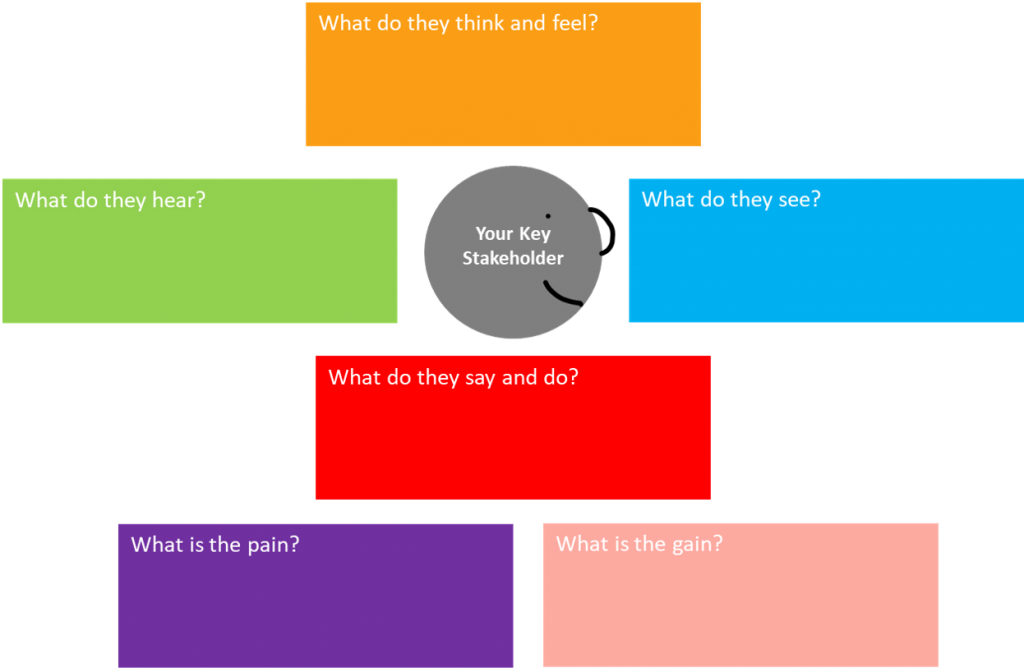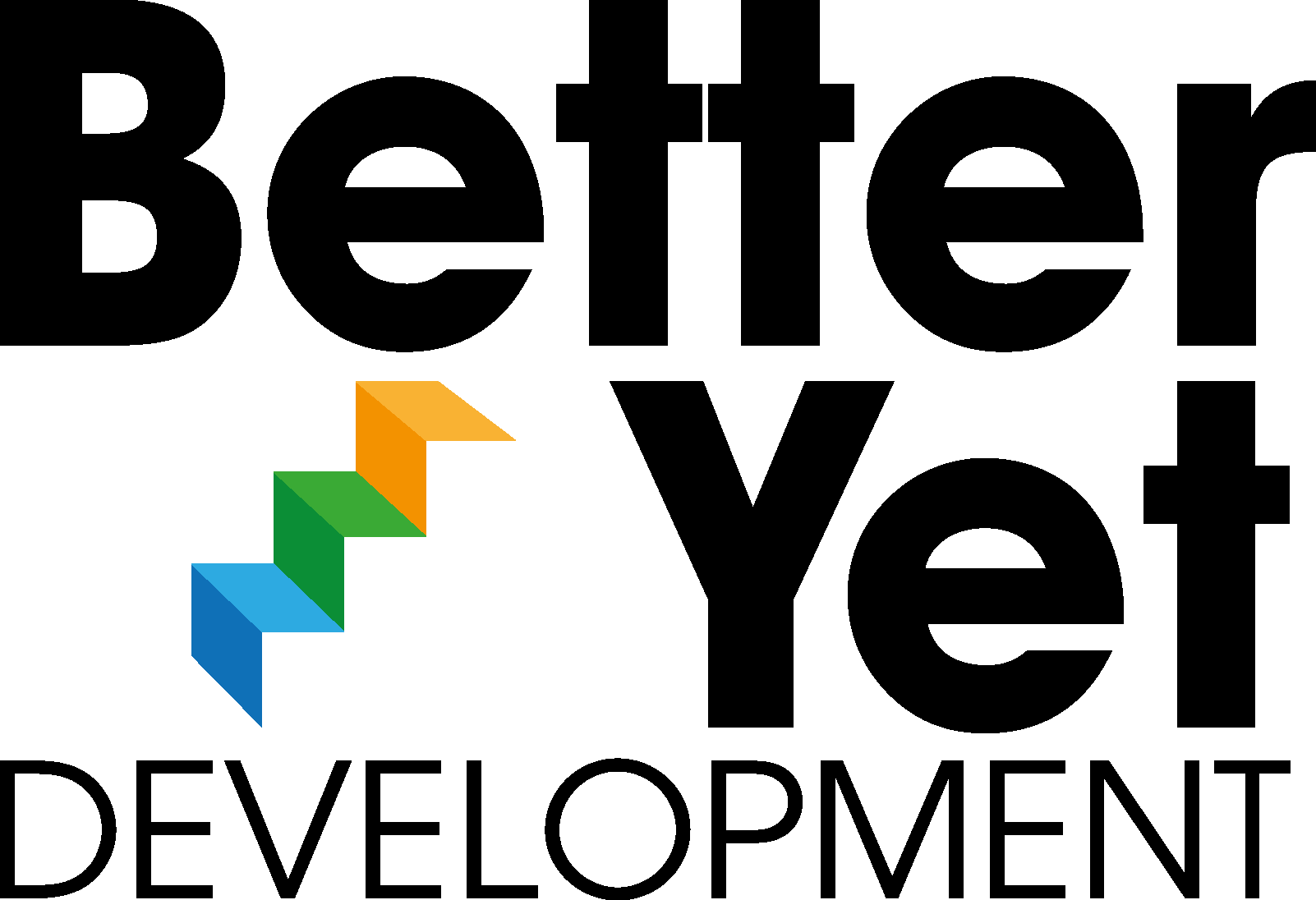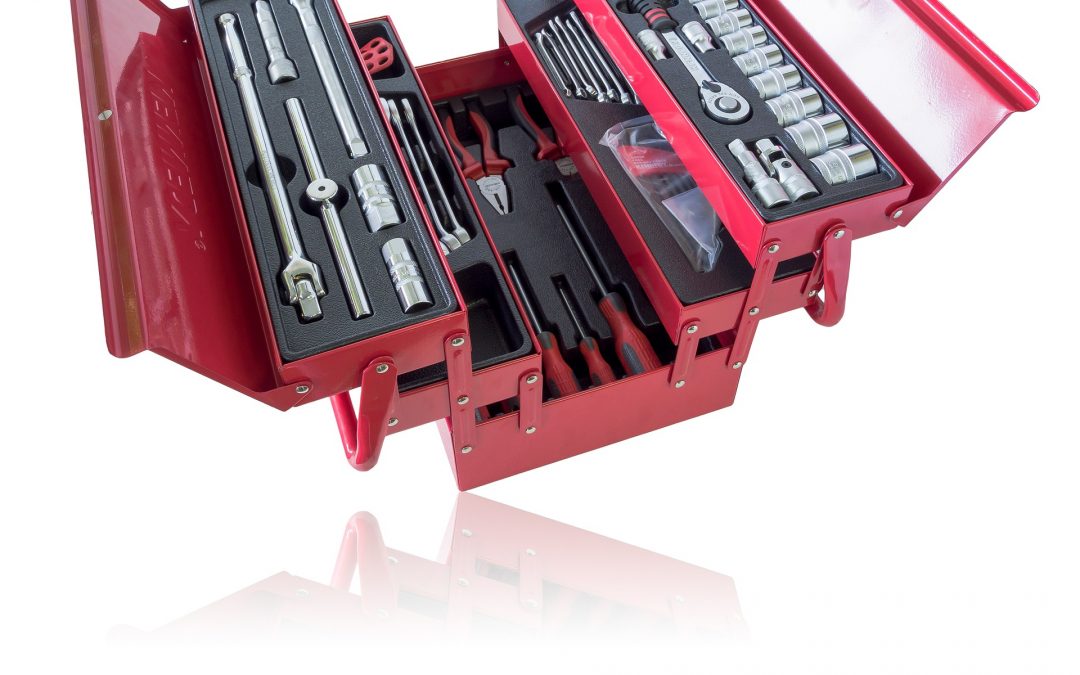I used this tool with a team a couple of months ago.
They were stuck. Their business had been particularly hard hit by Covid and they’d run out of ideas.
It was time to think differently.
Most great ideas don’t start with a blank page – rather, they’re a reaction to existing problems or opportunities.
Often these problems or opportunities are associated with key stakeholders or customers/clients.
The Empathy Map provides a quick exercise to put yourselves in the mind of the stakeholder(s) concerned and systematically find those problems or opportunities from the stakeholder point of view.
It works brilliantly with a team and is fine to use remotely.
You can make the exercise as simple or complex as you want. I took about 25 minutes with the team I mentioned earlier and we emerged with 2 or 3 genuinely breakthrough ideas.
Start by clarifying the key stakeholder(s) you want to focus on. You could finesse the process further by homing in on a particular element of your stakeholder’s life cycle with you – such as decision to buy or service experience. Alternatively, you could simply look at the overall stakeholder relationship.
Use a version of this diagram, either on a few pieces of flipchart paper, a whiteboard or a slide if you’re running the session remotely:

Help the team get into the heads of their selected stakeholder(s) by asking these questions in turn:
- What do the stakeholders think and feel? What are their beliefs, hopes, fears, concerns, and emotions? What makes them happy, sad, scared, emotional, angry?
- What do they hear? What are they hearing in the moment of the interaction? What words or phrases are used? In a broader sense, what else are they hearing from other sources?
- What do they see? What are they seeing in the interaction and again, more broadly, what captures their attention visually? Who do they see? What are the key images?
- What do they say or do? How do they behave in various settings? With you? With colleagues? With their bosses?
- What is the pain they’re feeling in the interaction? What frustrations and stresses do they experience in their interaction with you?
- What do they stand to gain? What do they need to achieve their goals and be successful? What do they need you to provide so they can be successful?
Brainstorm the responses, either directly onto the flipchart paper/whiteboard/slide or via Post-it notes. As facilitator, ensure you get contributions from everyone.
Review the responses collectively, cluster them into appropriate groupings if necessary and start to form conclusions about the stakeholder relationship.
Use this insight to help identify areas that if changed, would have the biggest positive impact on the relationship. The Pain and Gain boxes are often particularly rich sources of ideas that could be gamechangers if implemented.
Agree actions and owners and put stakeholder-focused innovation into practice.
That’s it. This tool is beautifully simple but can have a huge impact.
If you’d like to discuss how the Empathy Map could help teams in your organisation, please just email me or give me a call on +44 (0)7967 352602.

